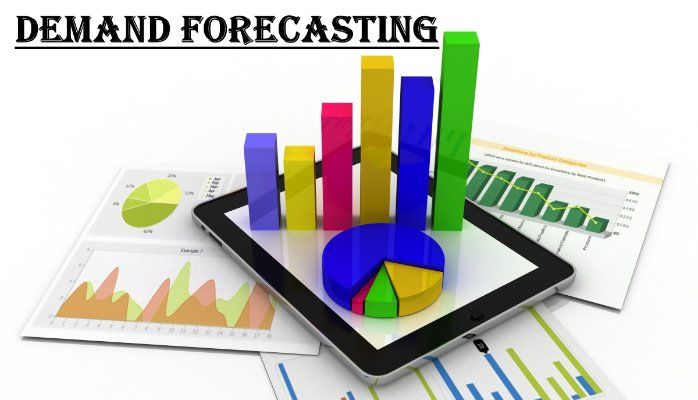Demand forecasting is evolving as a result of new technologies. Long-standing demand-planning strategies are gradually being replaced by automated “demand-sensing” solutions that combine big data analytics with artificial intelligence (AI) and machine learning techniques with real-time data on market events that affect demand patterns.
To estimate future product demand, the classic demand forecasting process, broadly speaking, pulls previous shipment and sales data. Additionally, these projections occasionally consider known variables such as seasonality and promotions.
Although useful, predicting future demand based on the past (and common sense) has clear drawbacks. This method cannot quickly adapt production and delivery throughout the supply chain pipeline in response to changing market conditions.
What Advantages Does Demand Sensing Provide
Demand sensing is a method of forecasting that generates accurate, hourly or even daily projections of client demand. It uses automation, machine learning, a variety of data sources, and real-world events to identify customer behavior that affects businesses’ bottom lines.
Demand sensing can produce close to real-time visibility of demand from daily POS and channel data, rival marketing, macroeconomic data, and even the weather. As a result, businesses can now better predict where, when, and what products consumers will purchase.
On the other hand, traditional demand forecasting is based on past sales information. The issue is that customers don’t engage in repetitive buying habits. Demand planning uses data obtained from a year ago but demand sensing utilizes data gained hours or days ago to make short-term predictions accurately. Demand planning, on the other hand, provides long-term prediction, which often has chances of anomaly. Current demand projections ignore key indicators like market conditions, regional events, and marketing efforts. With the help of demand sensing, you may create forecasts based on a plethora of internal and external data to create a more precise picture of the client perusing the shelves.
Demand sensing complements rather than replaces conventional demand forecasting. Projection accuracy can increase by up to 40% when coupled with a more precise and controllable forecast of daily demand. In addition, companies can use daily demand information for longer-term forecasting and planning, including “hero SKU” characteristics, initial buys, and price tactics. Demand sensing reduces supply chain latency by applying predictive analytics to provide daily demand projections, allowing demand planners to react to actual shelf activity rather than yesterday’s forecast. Right now, demand sensing is the tool.
How Can Demand Sensing Transform the E-Commerce Sector
1. Increased Sales with Accurate Results
Planners have a more detailed understanding of what drives customer demand with more precise demand estimates. With the help of lucrative planograms and product range planning, merchants may use this to meet current demand and mold it for the future. They can predict when, where, and how many SKUs will be impacted, which is crucial for seasonal and longtail SKUs. Businesses may proactively stock and supply things their customers demand, decreasing missed sales and product obsolescence, whether due to the weather or a new social media fad.
2. Improve Customer Experience
Enterprises may advance their demand planning capabilities significantly closer to the ultimate goal of customer-level predictions by utilizing demand signals across all channels and your customer activities like promotions, loyalty, and personalization. They can witness higher order-fill rates and streamline online and offline consumer interactions with better on-shelf availability and optimized restocking. This results in increased customer satisfaction and the development of devoted, recurring customers.
3. Reduce Safety Stock Levels and Maintain an Optimum Inventory
Retailers may dynamically optimize inventory and lower inventory depth even for seasonal patterns and products with shorter product life cycles by minimizing forecast mistakes. Most critically, it gives businesses newfound confidence in safety stock levels and inventory planning. They can ensure that distribution centers and in-store shelf space are optimized with the proper labor and stock to meet demand, even across millions of SKUs.
4. A Flexible and Sustainable Supply Chain
Greater demand insight enables merchants to foresee and reduce stockouts and overstocks due to rising transportation and freight costs. Scenario planning with more precise and automated judgments enables more effective inbound and outbound operations, which reduces waste and variable costs. Demand sensing through demand planning software is critical for understanding and optimizing the impact of excessive shipments, product waste, and site-level efficiency in everyday operations, as sustainability is a top focus for retailers and their customers.
5. Easy Replenishment Planning
Dynamic purchase plans can be automatically developed by taking into account fill rates, dynamic lead times, current inventory levels, dynamic safety stock levels, and open orders. Replenishment orders may be quickly placed with the program, and purchase planning can be made simpler. Depending on the fill rate, costs, and lead times, the best vendor for a particular SKU in a particular area can also be selected.
6. AI-Based Promotion Planning
Planning promotions is challenging, and because demand varies, planners encounter several difficulties when predicting demand. Demand planning software may track historical promotion data, anticipate future promotion calendars, and assess how promotions on one product affect related products. It also creates a visual link between the impact of promotions and demand, making it the ideal platform for demand planning for e-commerce companies.
About the Company
One of the reliable businesses that provide powerful artificial intelligence-based demand planning software is Fountain9. By delivering exact information on how the demand will increase or decrease over the coming days, Fountain9’s machine learning-based demand sensing aids organizations in anticipating their supply requirements well in advance. Both overstocking and understocking of products can occur as a result of retailers’ incorrect product stocking.













